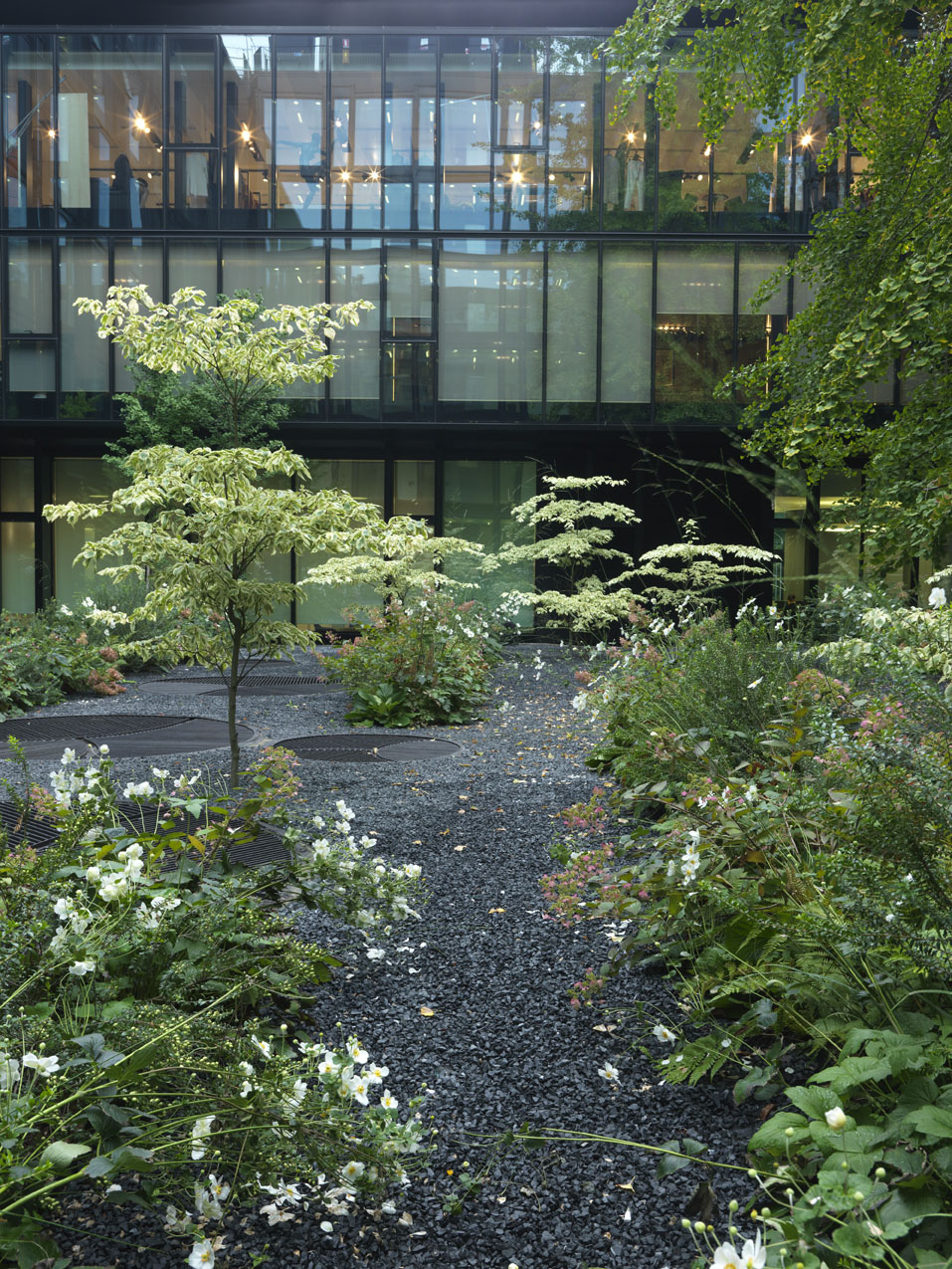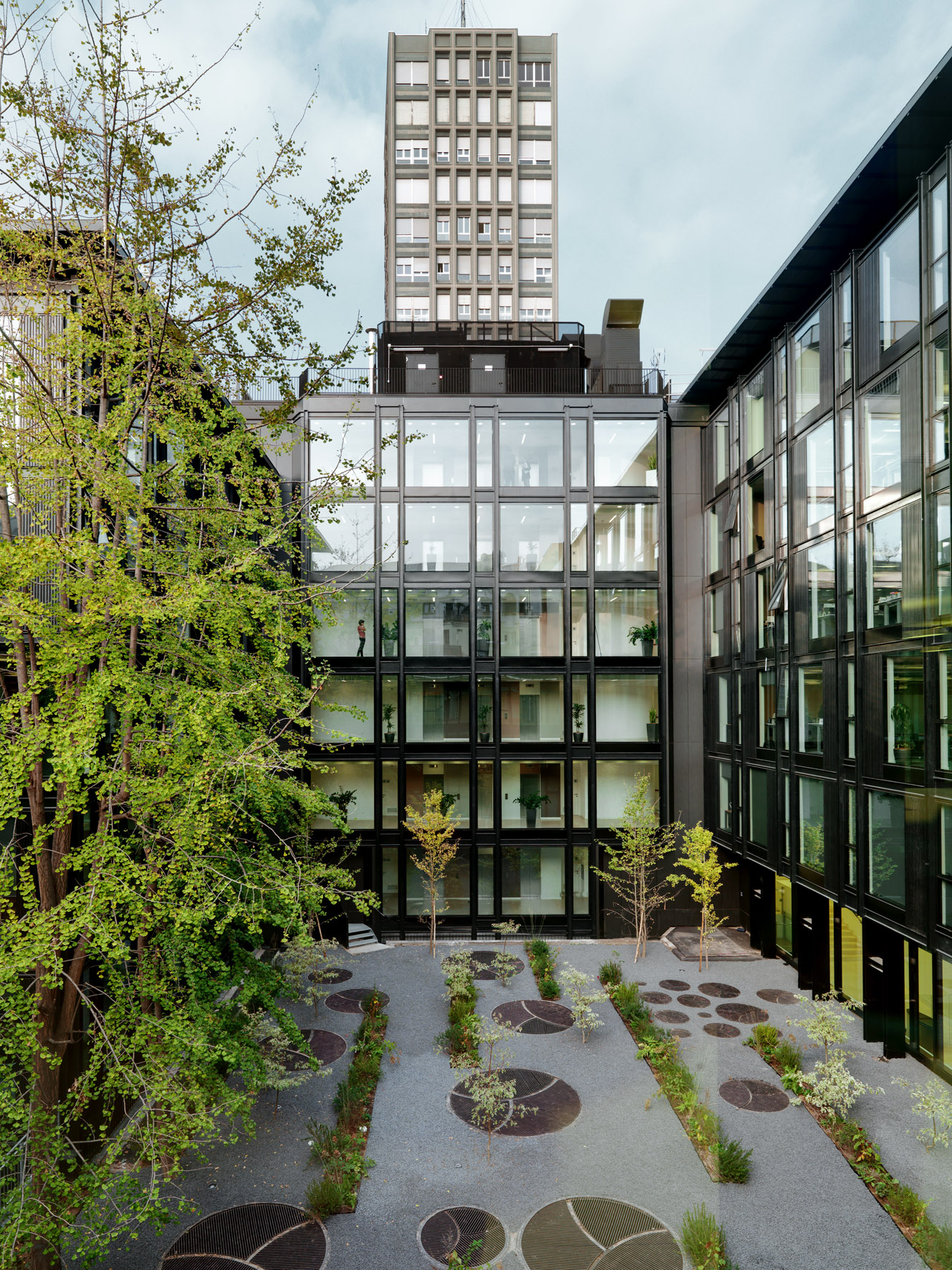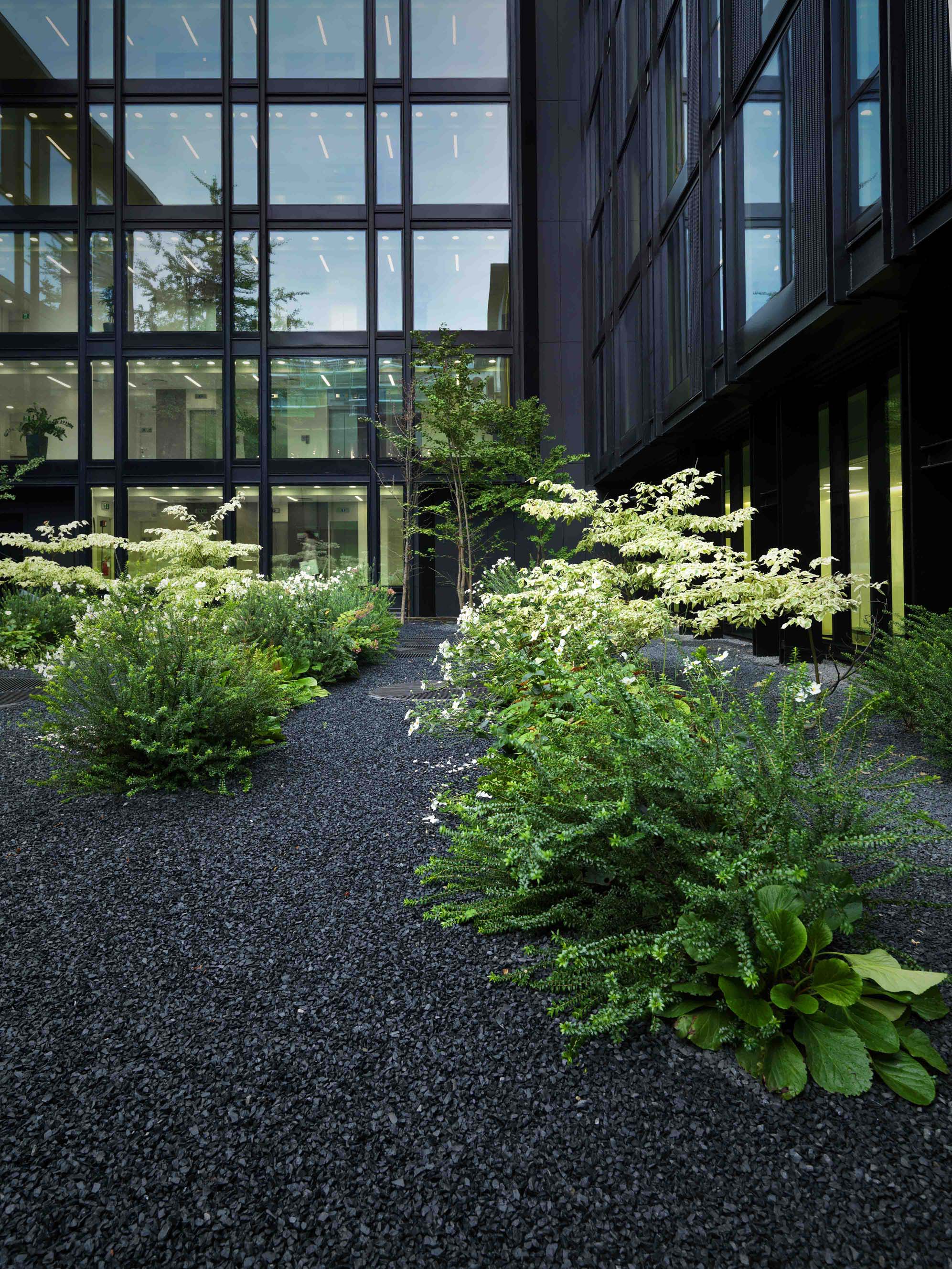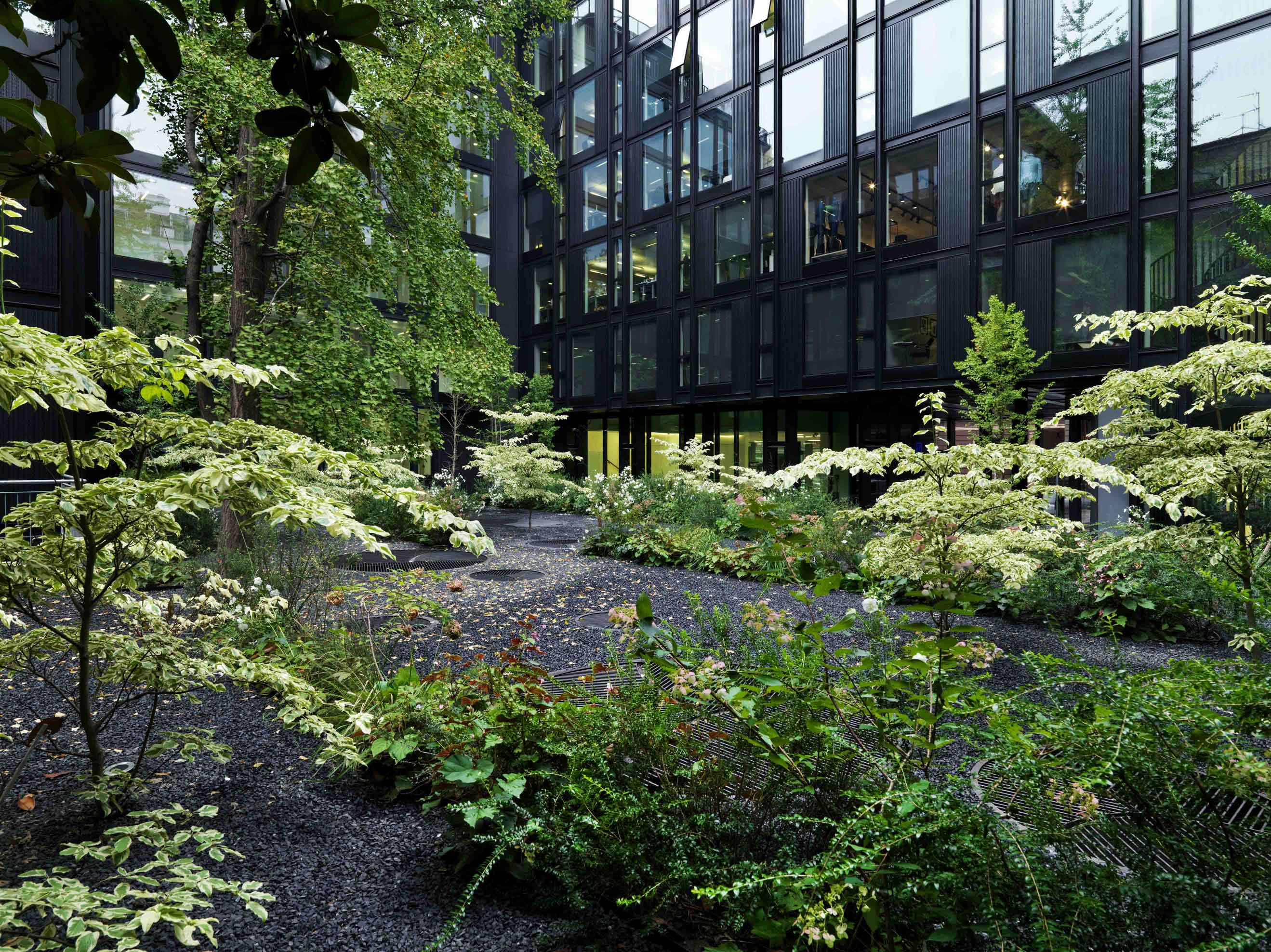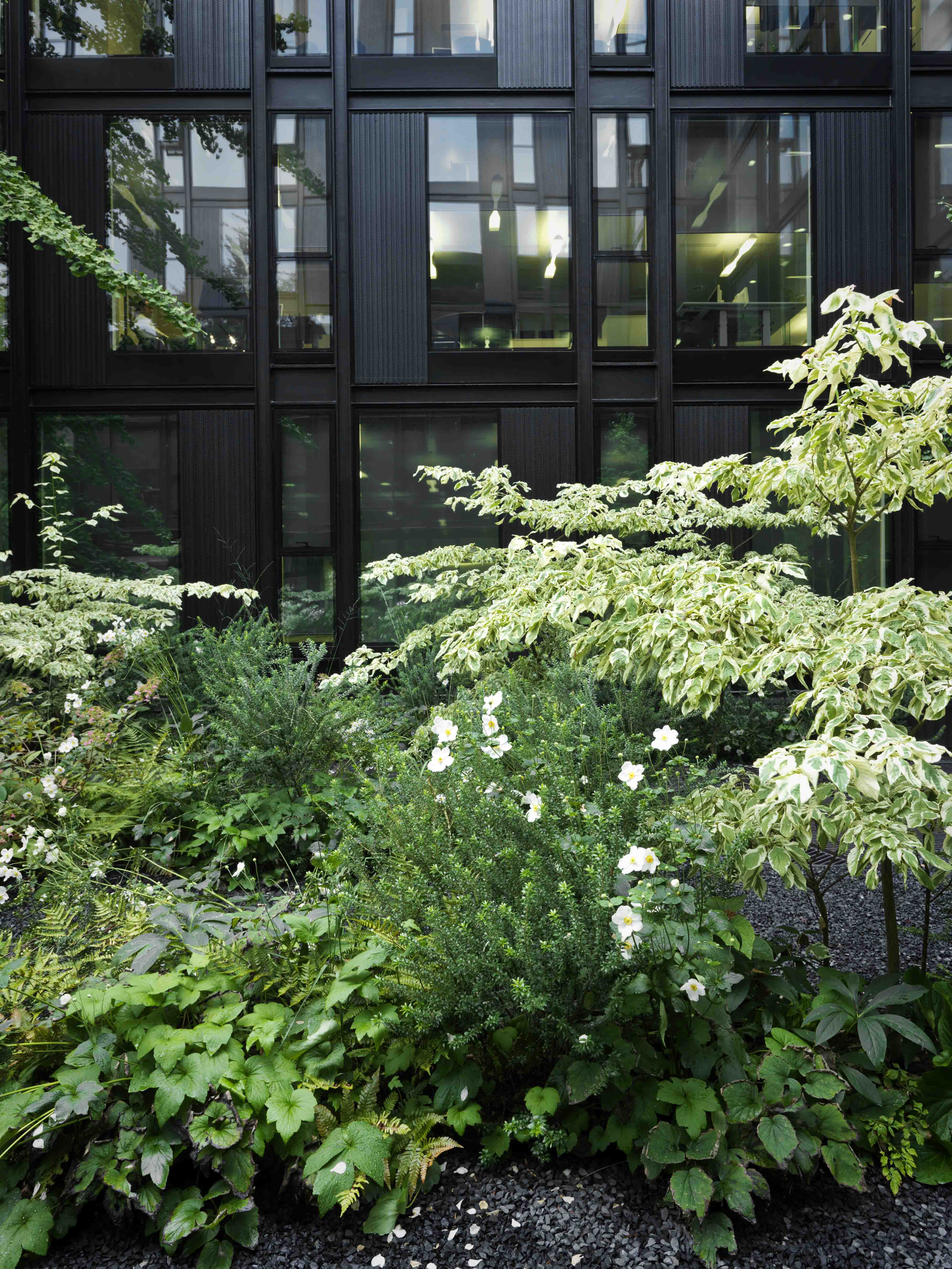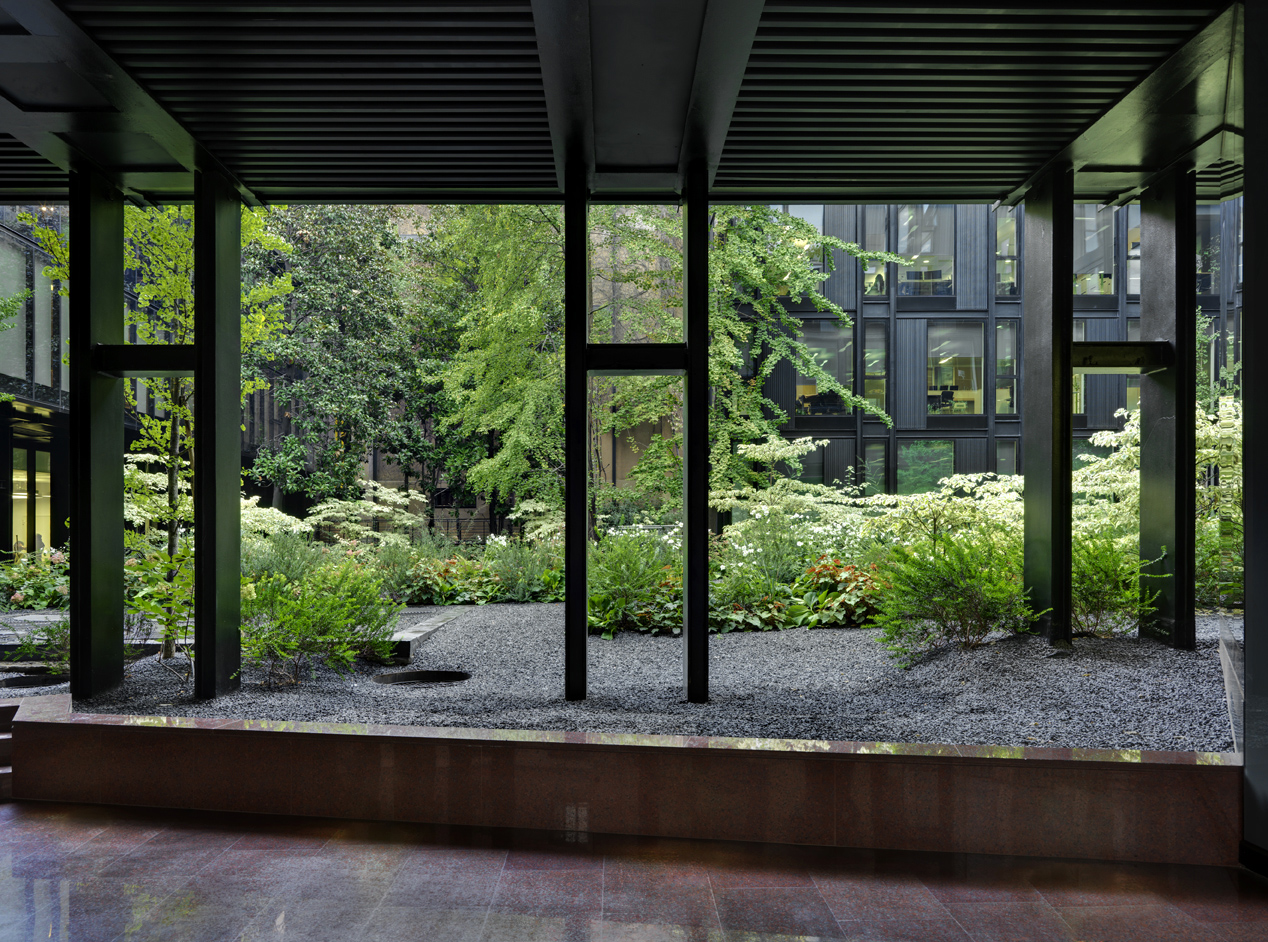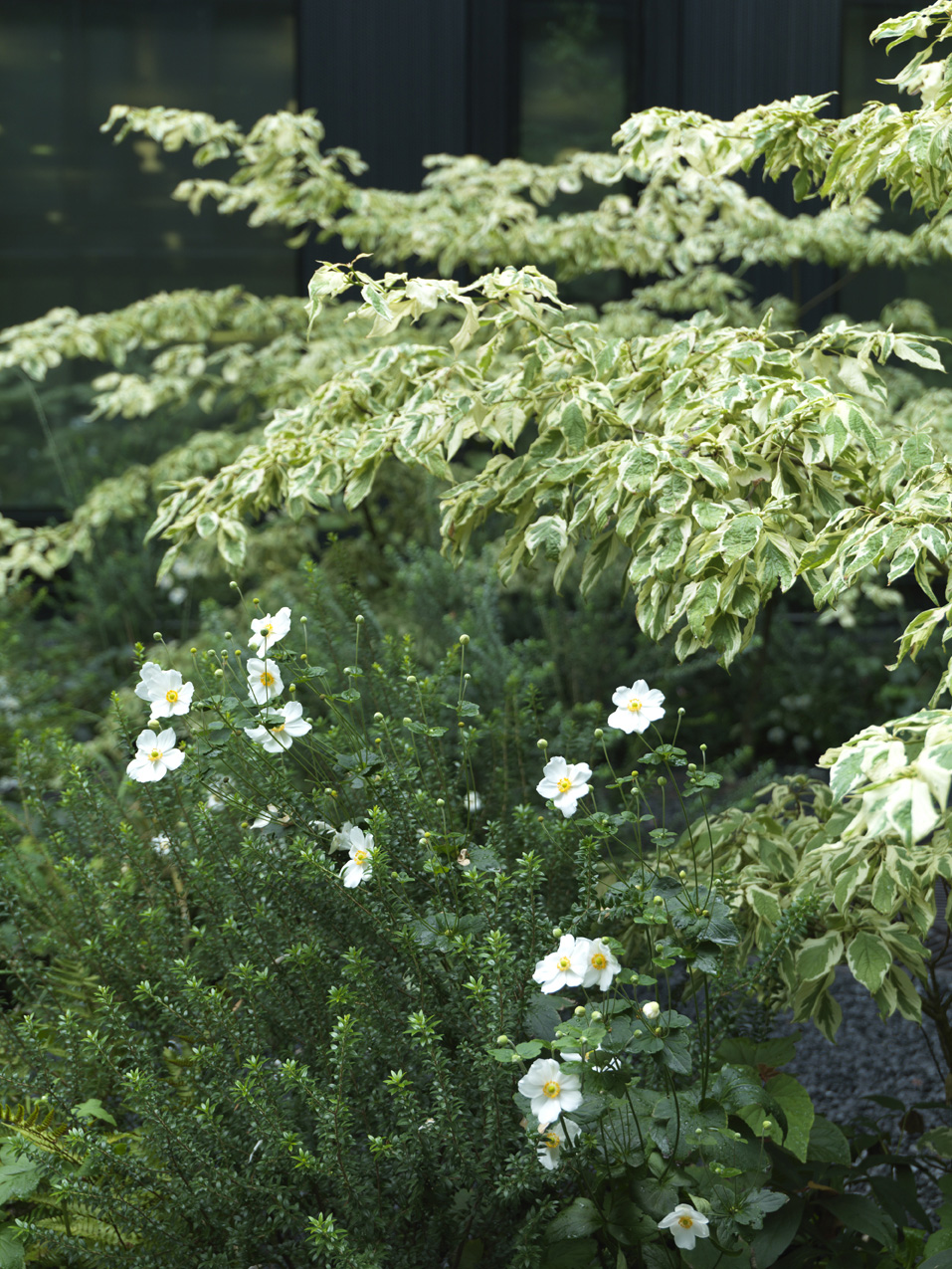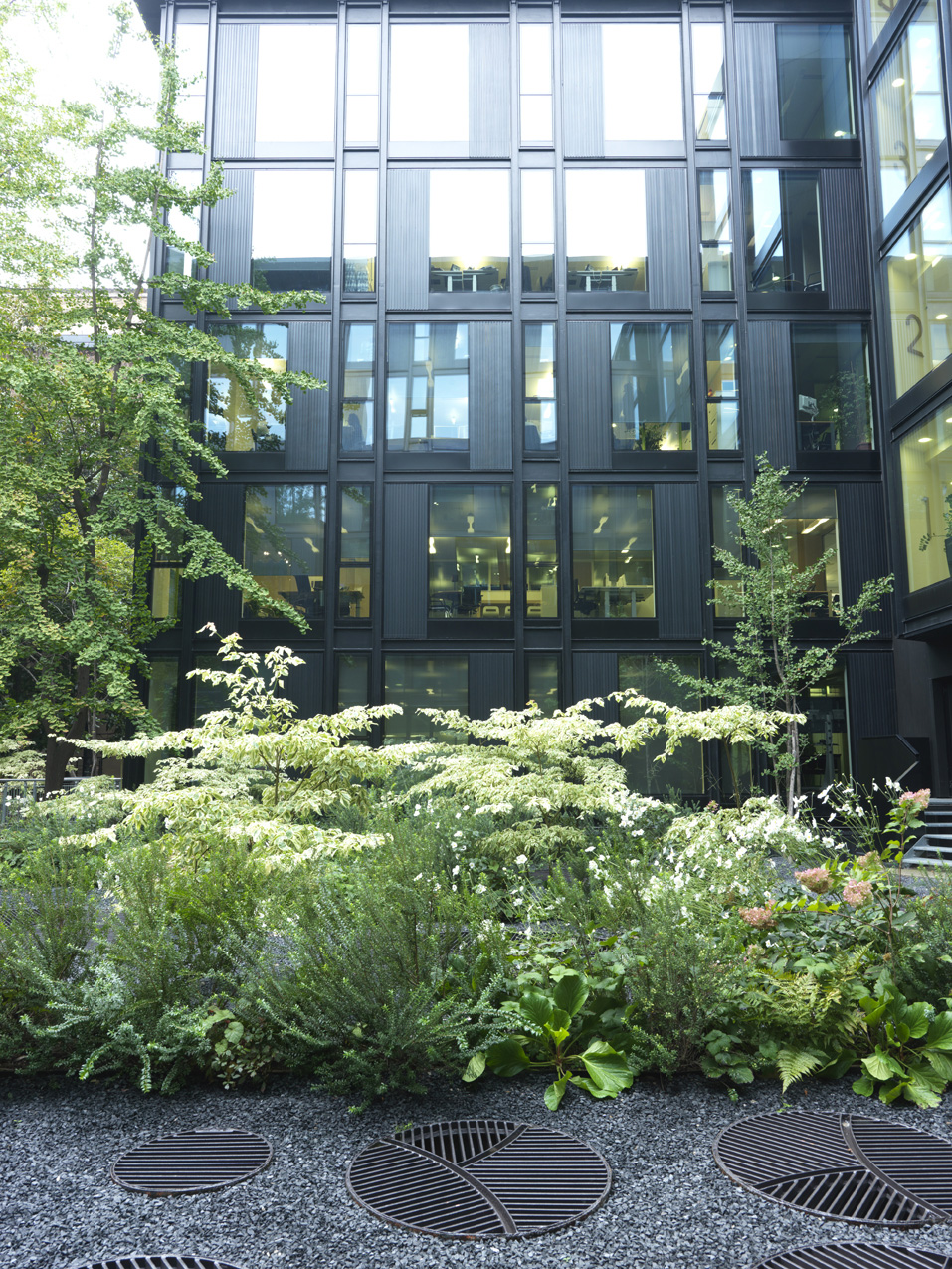
This post is also available in:
 Italiano (Italian)
Italiano (Italian)
Also known as Palazzo Campari, Palazzo La Serenissima was designed in the 1960s by Ermenegildo and Eugenio Soncini. The palace is in via Turati 29, Milan. It is a true example of a series of buildings representing the industrial economic boom of the past in Northern Italy.
The building features a burnished metal facade, smoked glass, the curtain-wall system, and brown painted panels on the rear side – everything was placed there to make it look modern and technologically advanced.
In 2012, Palazzo La Serenissima was restored by the Park studio on behalf of a foreign bank. The works included interventions on the facade and an overall upgrade while preserving the original architecture.
THE PROJECT
Landscape architect Marco Bay was tasked with re-designing the obsolete internal garden, which had also been damaged during the building renovation. The architect got rid of all the vegetation but seven specimens of maidenhair trees and a magnolia (Magnolia grandiflora).
The area of about 3.587 square yards involved in the intervention, was resting on an underground garage and had two main limitations which were then transformed into points of strength: the depth of the ground (only 17,75 inches) and large ventilation grids, of different sizes and randomly arranged.
Playing with the latter and painting them gray, Bay devised a series of long and narrow borders, resulting in an innovative division of spaces. The ground surface was covered with a layer of dark gravel, matching the black color of the building and lowering maintenance costs and water consumption.
The choice of plants was just as carefully devised: a few recurring species with different and harmonious texture were chosen, creating successful contrasts between elegant shapes and colors. They were mainly evergreen plants featuring white and golden foliage (in autumn), eventually blossoming with white and pink flowers. Thus, each season would have its prominent color. Those “protagonists” in the garden are some controversial “Variegated” dogwoods, with bright foliage and variable bearings, especially when bare. Other plants include, in particular, Bergenia crassifolia, Begonia grandonia evansiana, Myrtus communis tarentina, and grasses Molinia caerulea “Karl Foerster”.
This post is also available in:
 Italiano (Italian)
Italiano (Italian)
Contatti
Via Turati, 29 - Milano(MI)
Altre info
Gratuito
il giardino è visibile dalla strada, grazie alla grande vetrata; per entrare singolarmente, occorre chiedere il permesso al portinaio. Per visite guidate, contattare il paesaggista.
